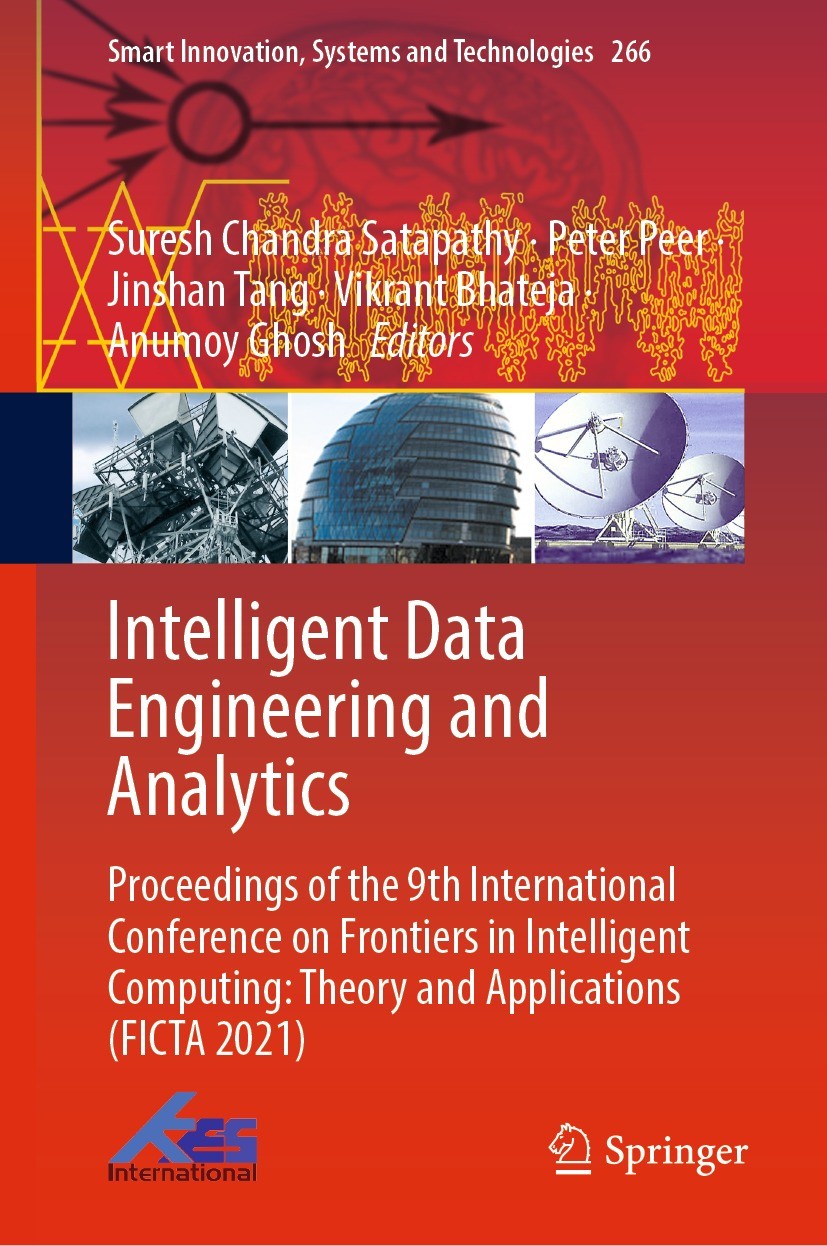| 书目名称 | Intelligent Data Engineering and Analytics | | 副标题 | Proceedings of the 9 | | 编辑 | Suresh Chandra Satapathy,Peter Peer,Anumoy Ghosh | | 视频video | http://file.papertrans.cn/470/469570/469570.mp4 | | 概述 | Presents research works in intelligent data engineering and analytics.Provides results of FICTA 2021 held at NIT Mizoram, Aizwal, Mizoram, India.Serves as a reference for researchers and practitioners | | 丛书名称 | Smart Innovation, Systems and Technologies | | 图书封面 |  | | 描述 | This book presents the proceedings of the 9th International Conference on Frontiers of Intelligent Computing: Theory and Applications (FICTA 2021), held at NIT Mizoram, Aizwal, Mizoram, India, during June 25 – 26, 2021. FICTA conference aims to bring together researchers, scientists, engineers, and practitioners to exchange their new ideas and experiences in the domain of intelligent computing theories with prospective applications to various engineering disciplines. .This volume covers broad areas of Intelligent Data Engineering and Analytics. The conference papers included herein presents both theoretical as well as practical aspects of data intensive computing, data mining, big data, knowledge management, intelligent data acquisition and processing from sensors, data communication networks protocols and architectures, etc. The volume will also serve as a knowledge centre for students of post-graduate level in various engineering disciplines. . | | 出版日期 | Conference proceedings 2022 | | 关键词 | Computational Intelligence; Artificial Intelligence; Data Mining and Knowledge Discovery; Big Data; Data | | 版次 | 1 | | doi | https://doi.org/10.1007/978-981-16-6624-7 | | isbn_softcover | 978-981-16-6626-1 | | isbn_ebook | 978-981-16-6624-7Series ISSN 2190-3018 Series E-ISSN 2190-3026 | | issn_series | 2190-3018 | | copyright | The Editor(s) (if applicable) and The Author(s), under exclusive license to Springer Nature Singapor |
The information of publication is updating

|
|
 |Archiver|手机版|小黑屋|
派博传思国际
( 京公网安备110108008328)
GMT+8, 2025-11-21 12:07
|Archiver|手机版|小黑屋|
派博传思国际
( 京公网安备110108008328)
GMT+8, 2025-11-21 12:07


